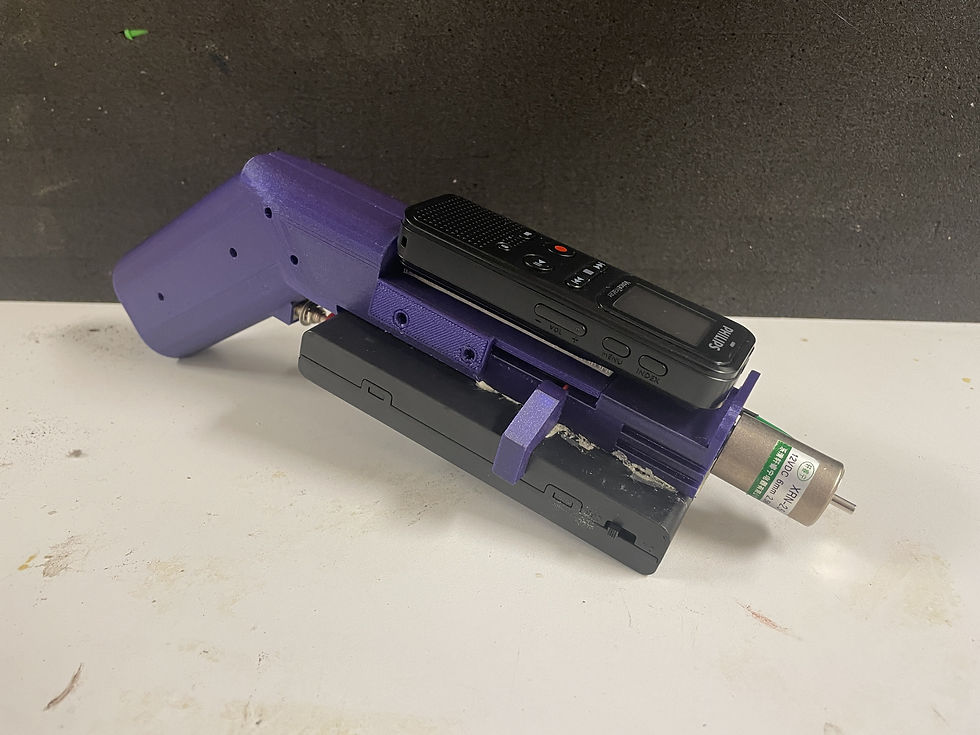Blog #7
- James Valentine
- Mar 21, 2024
- 2 min read
We have completed a lot of validation and we have attempted some percent accuracy validation with HYTORC. Values for the battery life and sound volume have been calculated and it’s been confirmed that the device properly fulfills these specifications in its current state.

In addition, a second iteration of the 3d printed casing has been designed. This version is meant to replace the current existing casing for the physical device entirely, and addresses many problems found in the original. Some of these issues include replacing the current Velcro strips used to attach the recorder onto the casing to a more secure method of attachment, having slightly enlarged wire channels in some parts of the casing, an extra plate to prevent the recorder from interacting with internal wires of the solenoid circuit, and widening the width of the walls for securing the activation button.


After our demo presentation with Professor Agrawal, we concluded that a thorough analysis and debugging of the machine learning algorithm’s code is necessary to pinpoint the exact source of failure. Additionally, we are scheduling meetings with Dr. Song and other experts from the Smart Materials Lab to gain additional insights and perspectives on the issues.
In tandem with addressing the coding issue, our team is also gearing up for further validation. We are currently in the process of drafting the Bill of Materials and Instruction Pamphlet, with a targeted completion date by the end of next week.
Furthermore, we are planning to 3D print the enhanced version of the prototype discussed earlier. This upgraded iteration will feature wider wire channels and a protective casing for the voice recorded component.
By completing these tasks, our team hopes to conclude Milestone 4.
The debugging process will not be easy. This will simultaneously involve getting advice from others and manually looking at the data associated with the audio. It can be difficult to examine data associated with Mel-frequency cepstral coefficients, but there are certain measures by which the difference in matrices can be measured, such as eigenvalues. Through figuring out what the differences are, it could be possible to figure out if a different machine learning approach is appropriate.
Outside of this, we anticipate that we’ll need some trial and error for the instruction pamphlet. We’re all used to using the device through all the validation we’ve done, so we’ll need to be meticulous in laying out the steps while keeping the pamphlet brief enough so that its usable by our target demographic, who generally won’t have any technical knowledge with respect to machine learning algorithms and the like.




Comments